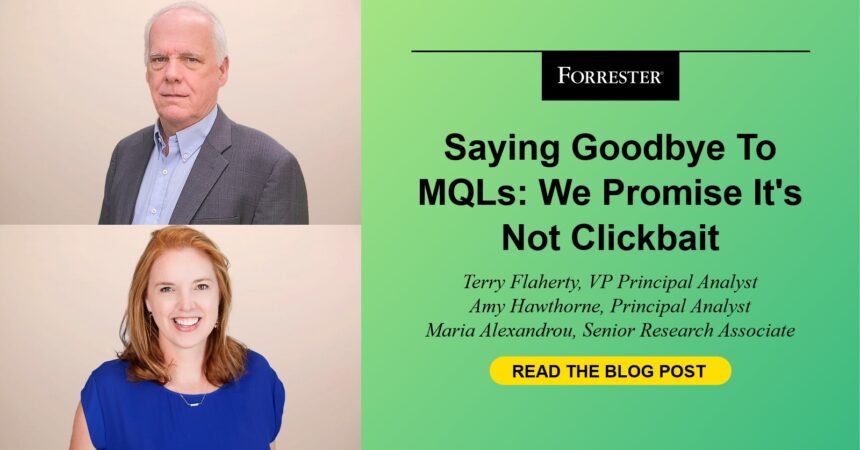This blog post is part of the Saying Goodbye To MQLs blog series, where we answer your questions about making the shift from leads to buying groups and opportunities.
One of the best things about doing this blog series on Saying Goodbye To MQLs is the feedback that we receive about both the series and individual posts. Overall, the feedback has been really positive, but we realized there is more to discuss about the marketing qualified lead (MQL) for saying goodbye.
Individuals Still Matter! They Just Aren’t The Only Thing That Matters
We’ve had a few readers question the validity of saying goodbye to MQLs in the revenue process. The common concern is that by saying goodbye to MQLS, we are overlooking, ignoring, and discounting the importance of people in the buying process.
One thing we want to make extremely clear: Driving engagement with individual people is 100% critical to the success of the revenue process. When we say “Goodbye MQLs”, in no way are we saying that engaged people don’t matter. What we are saying is that we can’t make engagement with a single person the end goal of the marketing function in the revenue process. And, more importantly, we can’t ignore the research — B2B leaders tell us they buy in a group. So, the MQL alone doesn’t represent the opportunity we’re looking for most of the time.
Unfortunately, in many revenue processes today, the end goal is still that single person who has engaged and reached a somewhat arbitrary MQL scoring threshold; it’s the only engagement that many organizations pay attention to. Engagement from additional people in the account/buying group are often considered “duplicate leads” and are intentionally disqualified. We consider that a tragedy because it intentionally hides additional insight about the buying group from sales. It wastes money and slows the process. That’s what we truly need to say goodbye to.
The truth is that insight into one person is not enough. Our revenue process needs to focus on leveraging all of the potential signals that exist about an opportunity. It’s not celebrating one person’s engagement; instead, it’s recognizing engagement of multiple people who share the same focus and are part of the same buying group.
I think we can all agree that multiple people engaged is a better indicator of true buying activity.
MQLs Are So 20 Years Ago …
One other question that we’ve received: Why the change from advocating for MQLs in our research and waterfalls to now taking a strong stance against them? Back when we launched the concept of the MQL over 20 years ago at Sirius Decisions, understanding the engagement of a single person and being able to score multiple interactions from an individual was pushing the limits of technology and our marketing processes. An MQL represented the best insight we had at that moment.
But 20 years later, technology has evolved immensely. We can now see a wide variety of signals about a potential account and opportunity. And more importantly, we now can interpret these signals to understand more about buying group members, their solution interest, the stage of the buyer’s journey they’re in, and other important attributes that can have a dramatic impact on the performance of the revenue process.
So yes, we were huge advocates for MQLs for years. But times have changed, and it would be a massive disservice to our clients and any B2B marketer out there to not to change our guidance to reflect the value of today’s insights, technology, and customer and prospect signals.
So, to summarize:
- Engagement with people still matters and is critical to the success of the revenue process. Marketing programs are still directed at target personas.
- But a single person does not make B2B buying decisions in a vacuum; decisions are made by a buying group.
- We must recognize that there are multiple people working together as a buying group and focus the revenue process on supporting the group that determines the winner in today’s revenue process.








